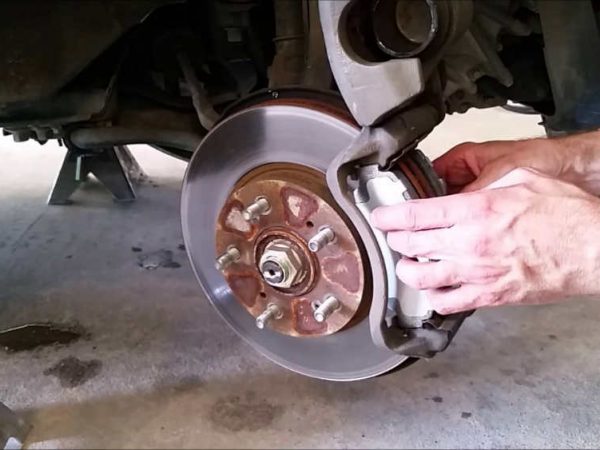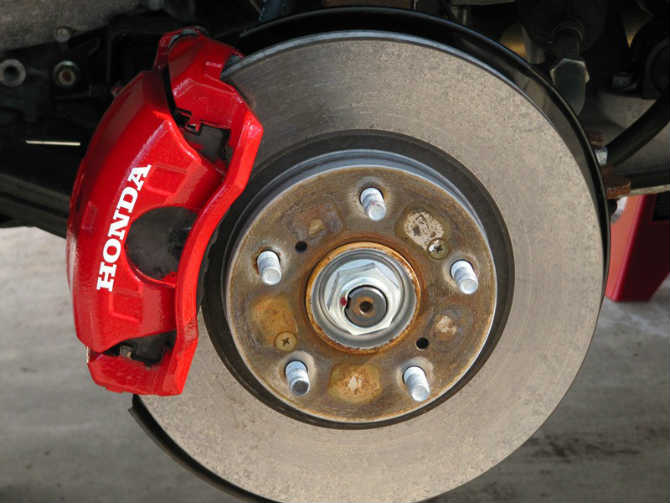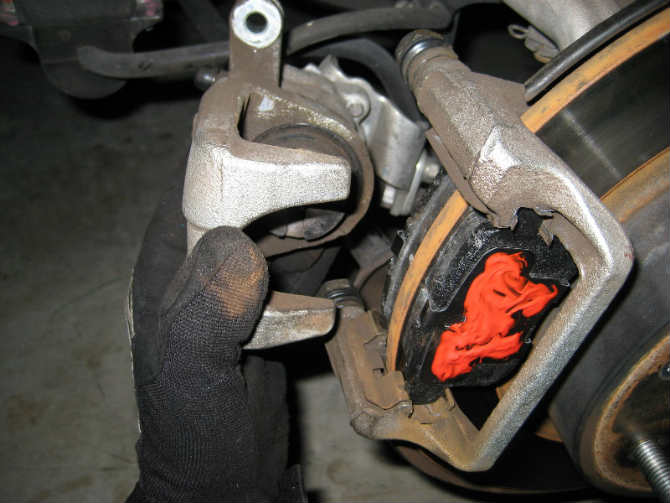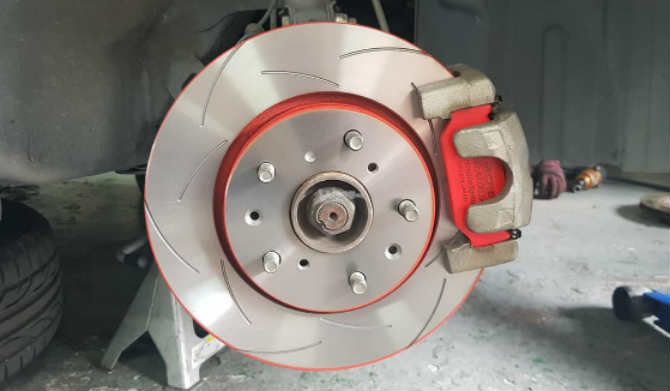11
May

The braking system of your Honda accord is one of the most important safety elements, which is why you need to inspect its components on a regular basis. Worn down brake components, like Honda Accord brake pads and discs, can reduce your vehicle’s ability to brake and stop, leading to a greater risk of accidents. But how do you know when to replace the brake discs and pads? There are a few signs that indicate your brakes are worn.

If you think it’s time to replace your Honda Accord brake pads or discs, finding suitable replacements is pretty straightforward. But before you go out and buy replacement parts, you should first get an idea of how brake systems work.
Most brake systems are quite simple. Each wheel on the vehicle has a brake disc, a calliper and brake pads. When you apply pressure to the brake pedal, brake fluid is released to the calliper, squeezing the brake pads against the disc, slowing your vehicle down. In most cases, the brake pads will need to be replaced more frequently than the discs. That being said, you should inspect both to see whether both need replacement or you can get away with buying only replacement pads.

Inspecting the brake discs and pads is quite simple, and you don’t need to take your Accord to a mechanic to see whether they’re worn or damaged. The side of the brake disc facing outwards (facing you) should have a shiny exterior. Look for visible grooves and rough spots, which are the most common indicators that the disc is beyond the minimum recommended thickness and needs replacing. The brake pads can be inspected by turning the steering wheel to the opposite direction of the pads you’re inspecting for a better view. The pads should be facing the brake discs and they should be enclosed by the callipers. There will be an inspection hole that allows you to check the thickness of the pads. As a general rule of thumb, the pads should be replaced if they’re less than 1/8-inch or 0.3175cm thick.
If your brake discs need to be replaced, look for replacements made for your specific model, type and make of Honda Accord. Some information that can help you make the right choice are:
There are two types of disc brakes – vented and solid. You can easily tell them apart if you look at them from the side. If your Accord has alloy wheels with space between the spokes, you’ll easily be able to tell whether they’re solid or vented without taking the entire wheel off. Vented discs are two flat discs on top of each other with gaps between them to allow airflow, which helps them stay cool, extending their life and improves braking. Solid discs are just discs without any space between them.

If your Honda Accord brake pads need to be replaced, the easiest way to make sure you get the right replacement is to check the size and shape of the pads you already have fitted. This can be time-consuming, but it’s a foolproof way to ensure you get the right replacement. When choosing between different brake pads, you need to consider the position of the brake pad (either rear or front), and the construction year (some pads can only fit a vehicle up until a specific time period), and the material the brake pads are made of (whether ceramic, semi-metallic or organic).
Ceramic brake pads are considered the highest quality type, but they’re also the most expensive. They offer strong stopping power and last a long time. Organic brake pads are the most affordable ones, but they don’t offer as much stopping power as semi-metallic and ceramic brake pads. Semi-metallic brake pads can be made from a range of materials, and organic materials are used as filler. Semi-metallic brake pads are for heavy-duty use, but they also create noise. The ideal brake pads for your Accord will depend on how and where you drive your Honda Accord most often.